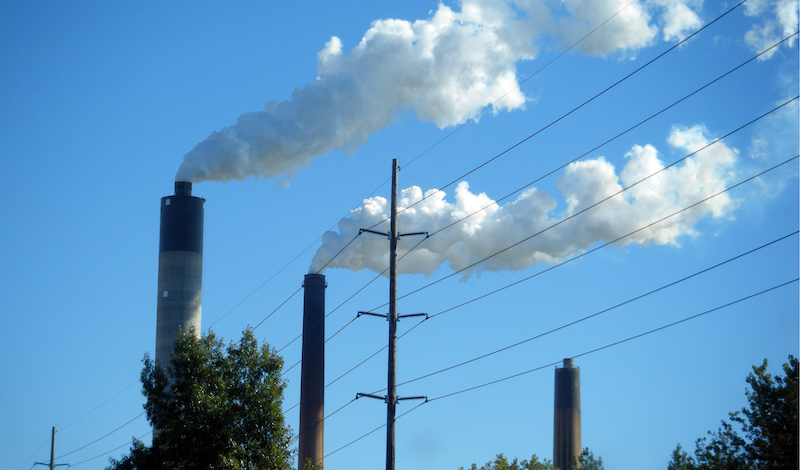
Examining countries’ net-zero pledges reveals variations and loopholes that will allow for slippage in climate progress.
The 2015 Paris Agreement on climate change established the goal “to limit global warming to well below 2, preferably to 1.5 degrees Celsius, compared to pre-industrial levels.” To reach this goal, countries should achieve net-zero emissions by 2050. To date, 139 countries representing 83 percent of global emissions have announced net-zero emission pledges.
Pledges enhance countries’ climate reputations. And reputations are important in global politics, be it reputations about corruption, ease of doing business, or democracy. But using a pledge to enhance reputation is also risky. What if the country does not meet the pledged goals? Would such a pledge allow climate groups to “name and shame” governments?
This risk means that governments will either not pledge or will create a pledge with lots of loopholes. Because decarbonization sometimes creates political problems at home, countries might strategically craft climate pledges with loopholes that allow them not to decarbonize fully—and this is probably what is happening with many climate pledges.
The recent United Nations Environmental Programme’s Emission Gaps Report highlights that countries are not meeting emissions goals. It predicts that, on the current emissions trajectory, global temperatures could rise to 2.5 degrees Celsius by the end of the century—well above the Paris goal.
Why, then, are countries not meeting emissions targets, even though most of them have announced emission pledges? One reason might be that their net-zero emissions pledges have loopholes, making it possible for them to avoid aggressive decarbonization. Loopholes are possible because pledges do not follow a standard format. They vary in terms of the share of the country’s emissions pledges cover, how quickly the country promises to reduce emissions, and mechanisms the country has in place to ensure that decarbonization proceeds as planned.
In a recent paper, we developed a framework to evaluate the stringency of net-zero emission pledges. Drawing on the Net-Zero Tracker database, our framework identifies four pledge dimensions: speed, accountability, domestic scope, and international scope.
The speed dimension looks at how quickly a pledge aims to achieve net-zero emissions. Following the timeline set by the Paris Agreement, most countries have indicated 2050 as their target year to achieve net-zero emissions. But 11 countries—including climate leaders such as Germany and Sweden, as well as other countries, such as Nepal, Mauritania, and Guinea-Bissau—have pledged to an earlier deadline. At the same time, 10 countries have pledged to a later date, including China by 2060, India by 2070, Sri Lanka by 2060, and Saudi Arabia by 2060.
Surprisingly, net-zero emission pledges may not cover all emissions. Thus, the second dimension of a pledge—its domestic scope—examines whether pledges cover all greenhouse gas emissions from all industrial sectors. We find that 37 countries have made encompassing pledges. These include Barbados, Finland, Iceland, Germany, Sweden, and Fiji. The United States pledged that it would cover all types of emissions but it did not specify industrial sectors. China covers carbon dioxide only, and India did not provide any stipulations whatsoever on emissions coverage.
Third, we examine the issue of territorial emissions versus emissions embodied in consumption. A country might have a carbon-intensive economic system that relies on the imports of carbon-intensive industrial inputs, such as cement and steel, as well as on carbon-intensive final products. In terms of territorial emissions—the metric used in all climate treaties—such a country might look like a climate leader but, in reality, the country may have simply outsourced its emissions. Pledges that include imported carbon in emission accounting are therefore more stringent. Thus, the third dimension of our framework focuses on the international scope of the pledge. We find that only 12 countries have included imported carbon in their pledges. Top emitters such as China, India, and the United States allow for carbon leakages through trade.
Finally, some countries may monitor progress toward pledges because decarbonization is gradual and course corrections before 2050 might be necessary. To capture this, the fourth dimension of accountability examines mechanisms such as annual reporting and whether pledges have been formalized into nationally determined contributions or domestic law. These measures allow stakeholders to assess each country’s progress in emissions reductions and, when needed, to employ naming and shaming, or even litigation, if progress is tardy. Overall, 37 nations, including the United States, Canada, France, and Germany have annual reporting mechanisms. Twenty-one countries have translated pledges into domestic laws, and 47 countries, including China and India, have included them in their nationally determined contributions.
We developed a ranking system to assess the combined effect of the above four dimensions on pledge stringency, which indicates the extent of a country’s commitment to pursuing full decarbonization. In our ranking, the five nations with the most stringent net-zero pledges are Iceland, Spain, the United Kingdom, Greece, and Austria. The bottom five are Indonesia, India, Nigeria, Saudi Arabia, and Bahrain.
China is almost at the bottom, ranking 117 among 124 countries included in our analysis. This position is a source of worry because China is the world’s largest emitter of greenhouse gases. The United States is tied with Slovenia in 24th place
Net-zero emissions pledges are an important tool of climate policy. But given the variation in their stringency, many of these pledges could be viewed as greenwashing or climate-washing—that is, practices that may exaggerate a country’s commitment and practices to counter climate change.
Without a standardized pledge, the world risks operating with a false understanding of progress against climate change. Although the recent COP27 climate summit focused on the mechanics of creating a fund for countries that suffer loss and damage from climate disasters, the fundamental challenge of correcting the gap between pledged and real emission reductions remains unresolved. A standardized format for net-zero emissions pledges will help in tracking and comparing progress on decarbonization across countries.



